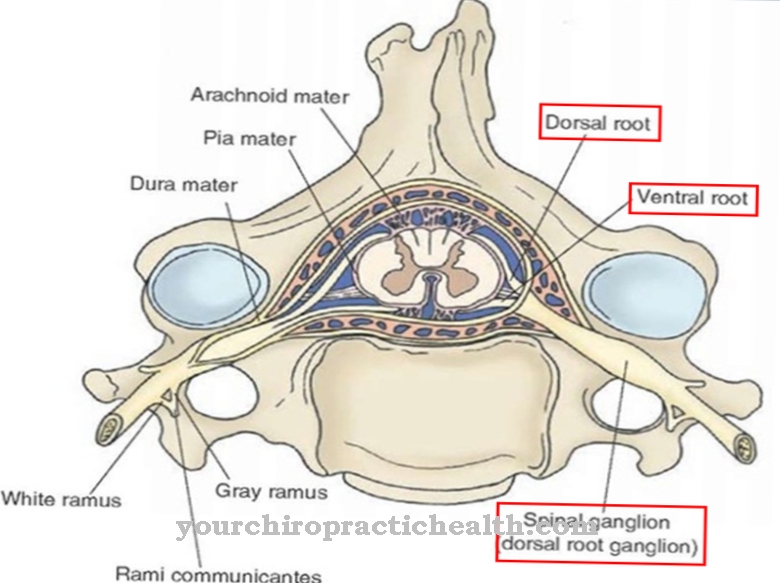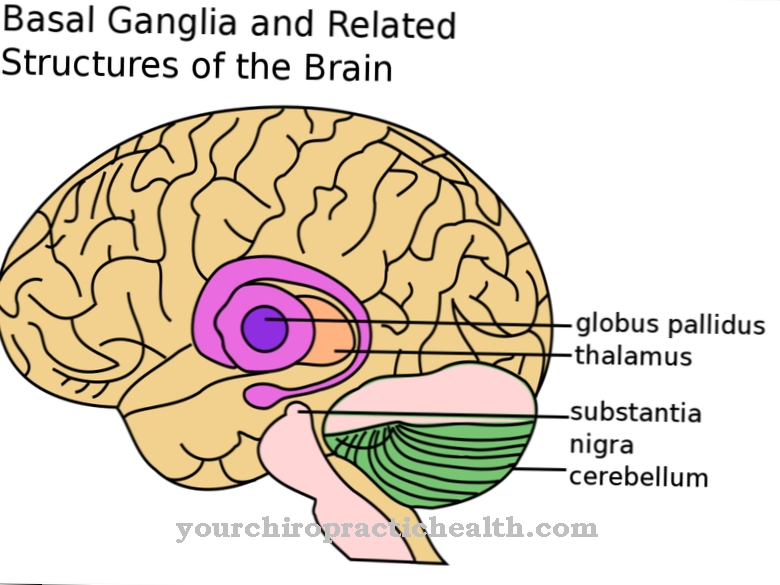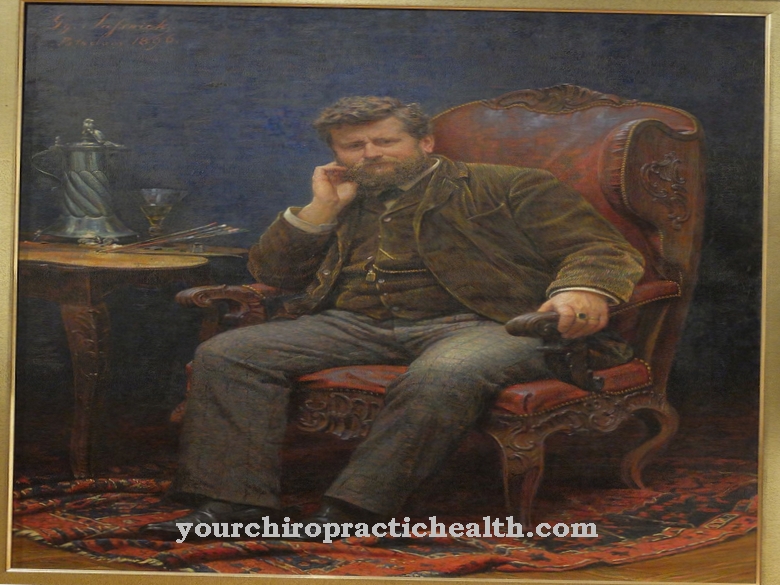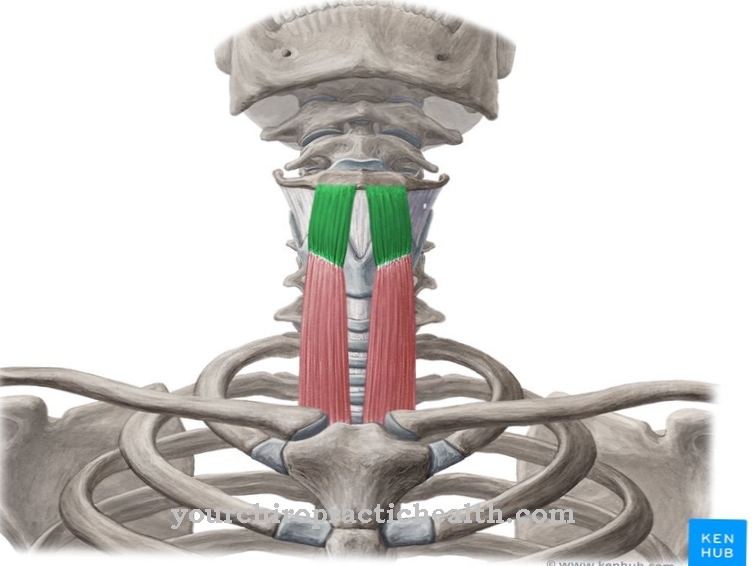The Glutes includes a variety of muscles with different tasks. It enables people to exercise certain movements. The muscles already play an important role in everyday life. At the same time, certain diseases of the gluteal muscles can be responsible for symptoms.
What are glutes?
The Glutes consists mainly of the large, medium and small gluteal muscles. Functionally, it is part of the hip muscles. The different muscles have different tasks and functions. The cooperation of the different muscles is particularly important for proper function.
At the same time, the gluteal muscle is the largest muscle in the human body. In addition, it is one of the strongest and covers the middle and small gluteal muscles.The gluteus muscle is part of the skeletal muscles. This is characterized by different factors. The fact that it is a voluntary muscle is particularly important.
Voluntary muscles are characterized by the fact that they can be moved consciously and their movement processes are not subject to unconscious mechanisms, as is the case, for example, with the heart muscle. The gluteal muscles not only take on important tasks in everyday life. It can also be trained through certain exercises. The individual muscles must be addressed in different ways during sport.
Anatomy & structure
The gluteus muscle takes up almost the entire area of the buttocks. The muscle structure consists of units that are getting smaller and smaller. First, the muscle is surrounded by a membrane. A large number of muscle fibers are bundled together to form the actual muscle. The muscle fibers differentiate into phasic and tonic subtypes.
They are formed by muscle fibrils, which in turn consist of sarcomeres. These store proteins that the body needs to be able to move the muscle. There are four different proteins: actin, myosin, tropomyosin and troponin. The muscles are built up in a certain structure. As soon as it is examined with the help of certain instruments, a pattern emerges that is reminiscent of horizontal stripes. That is why the muscles are also called striated.
The structure of the gluteal muscles thus follows the encapsis principle:
The gluteus muscle (Gluteus maximus muscle) consists of a superficial and deep part. While the deep part arises from the iliac scoop, the upper part is broad. This comes from the sacrum, tailbone, lumbar area and iliac spine. The gluteus middle muscle (Gluteus medius muscle) is almost completely covered by the gluteal muscle. It sits on the iliac bone and runs towards the thigh bone. The gluteus muscle (Gluteus minimus muscle) in turn is located under the middle one and is covered by it. It forms the back layer of the back muscles of the hip. Here, too, the origin of the muscle lies in the iliac bone. It runs transversely and also leans towards the thigh bone.Function & tasks
The different gluteal muscles also have different tasks. In their interaction, further functions arise. For example, it is only through the existence of the gluteal muscles that people are able to sit. In addition, the individual elements enable movements such as standing up, lying down or climbing stairs.
These can only take place if the parts work together properly. As soon as the function of one of the three muscles is disturbed, this can also affect the others. The symptoms that arise depend to a large extent on the muscle directly affected. The gluteus muscle is responsible for stabilizing the pelvis. It also plays an important role in walking upright.
The extension in the hip joint is particularly important here. In addition, the gluteus large muscle allows people to pull their legs towards the body or spread them apart. Tilting the pool is avoided, which is useful when climbing stairs, for example.
The middle gluteal muscle is responsible for stabilizing the pelvis while running. It works together with the small gluteal muscle. In addition, the inner and outer rotation of the thighs can take place through the middle gluteal muscle. Like the gluteus minor, the middle muscle helps with flexion and extension in certain positions. The function of the small and medium gluteal muscles is very similar. All three muscles play an important role in all movements in everyday life.
You can find your medication here
➔ Medicines for back painIllnesses & ailments
There are various diseases that can affect the gluteal muscles. These include paralysis, for example. As soon as one of the three muscles becomes paralyzed, movement is severely restricted. It is often no longer possible for those affected to bend and straighten their thighs adequately. It results in discomfort when sitting, getting up, walking, standing and climbing stairs.
If the middle and small gluteal muscles are paralyzed at the same time, it cannot be ruled out that the pelvis will tilt to the side of the free leg, causing the so-called waddling gait. In addition, other diseases can affect the muscles. There are different forms of inflammation. These are mostly triggered by bacteria, but viruses and other pathogens are also potentially possible.
Most of the time, the pathogens get into the muscle through another infection in the body and trigger another inflammation there. Under certain circumstances, this can be chronic. With constant tension in the muscles, hardening is also possible.
As soon as the muscle is permanently tensed, but no relaxation takes place, the blood vessels that are responsible for the blood supply to the muscle are pinched off. This results in inflammation, to which the body reacts with increased tension. In many cases, the hardening can be felt and causes severe pain.













.jpg)

.jpg)
.jpg)











.jpg)